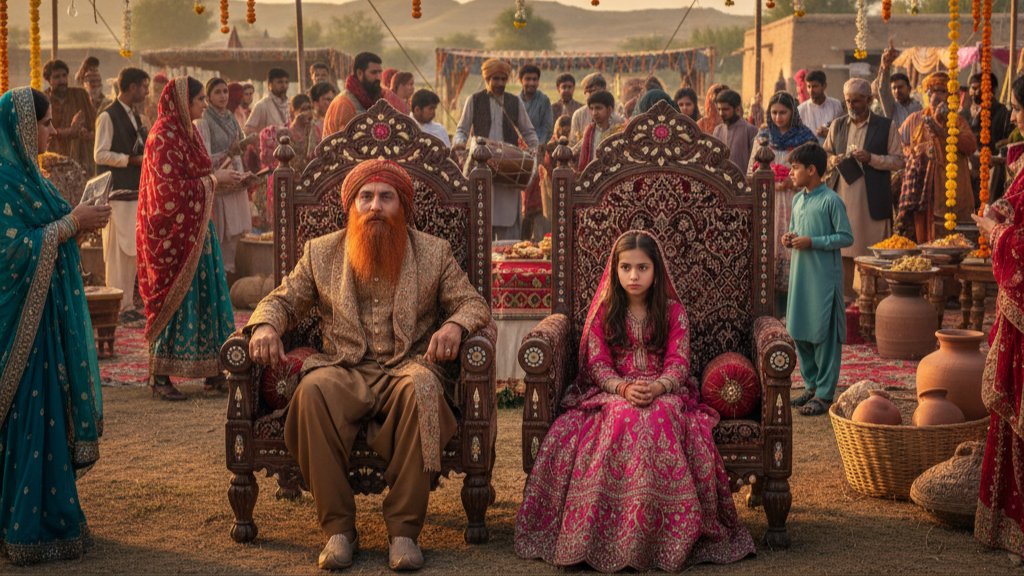For a country that dreams of sending women to the Moon and boasts of the world’s fastest-growing economy, India’s stubborn flirtation with bachpan vivah (child marriage) feels like a shameful relic that just won’t die. Official reports trumpet a “sharp decline” in the practice — yes, the graphs look good and the ministers beam — yet the reality on the ground tells a different story. In dusty villages and cramped slums, teenage girls are still being handed over in secret ceremonies, their futures sealed before they’ve even sat for their Class 10 exams. The statistics may celebrate progress, but behind the numbers linger the same old demons of poverty, patriarchy, and misplaced notions of family izzat (honour).
A recent survey (Insights IAS) by the network of non-government organisations called Just Rights for Children registered what it described as a remarkable drop in child marriages in India. The study showed states such as Assam saw an 84% decline, while Maharashtra and Bihar recorded around 70% reductions, and Rajasthan 66%. The campaign titled Bal Vivah Mukt Bharat (‘India free of child marriage’) has helped raise awareness of legal prohibitions and children’s rights.
This positive picture is linked to greater enforcement of the Prohibition of Child Marriage Act, 2006, stronger community-based reporting via panchayats and helplines, and sustained efforts to keep girls in school longer. But while the headline numbers signal hope, recent human-stories indicate that the practice still lurks in the margins — especially in rural settings where social customs, economic pressure and weak institutional oversight collide.
Take the case from Telangana in mid-2025 as reported by India Today: a 13-year-old girl in Class 8 from a village in Nandigama mandal was married off by her mother to a 40-year-old man; the wedding occurred at a local temple in May. Her only escape came when she confided in her school principal, who alerted authorities and intervened. The mother, the groom, and others were charged under the law. This stark incident reminds us of the reality: even when national trends are improving, localised pockets of vulnerable children remain targeted by the old norms of “bachpan ki shadi” (marriage of childhood).
Why does this persistence happen? At a cultural level, early marriage has for decades been seen in many rural communities as a hedge against economic insecurity, a means of ensuring “izzat” (honour) of the daughter, and a way to relieve the family of perceived burdens. In villages where families struggle with poverty, the logic may be that marrying a daughter early reduces dowry demands (it is believed); or it provides a social guarantee that she will be cared for, when in fact the opposite is often true. The survey cited poverty as a reason in 91% of the cases where child marriages occurred; furthermore, concerns about a girl’s safety outside the home contributed in 44% of those reports.
But a cultural shift is underway. The survey authors emphasised that norm-change is being driven by community awareness and visible enforcement: when panchayats, schools and frontline workers begin to treat child marriage as a non-negotiable offence, the very idea of marriage before 18 begins to shift from “tradition” to “injustice”. Many communities have started to perceive the benefits of keeping girls in school: delayed marriage, better health outcomes, increased earning potential. Yet, the same authors warned of “under-reporting and hidden marriages” especially in rural and tribal areas.
For any observer of India’s social change, the dual reality is striking: on one hand, progress is undeniable — the decline in child marriages reflects decades of legislative and grassroots activism. On the other hand, the lived stories — such as the one from Telangana — underline that without sustained attention to rural hinterlands, the poorest families, and the mechanics of enforcement, the problem won’t vanish. The entrenched logic of early marriage remains tied to caste, religion, family prestige, economic pressure and gender norms. Simple awareness alone cannot dismantle these strong roots.
Thus, while the phrase “sharp decline” is accurate in many contexts, it can’t lull the country into complacency. In Hindi it might be said: “shubh sanket hain, lekin kaam abhi adhura hai” (they are encouraging signs, but the work is still incomplete). The challenge now is to ensure that each rural hamlet, each school in the hinterland, each panchayat has the capacity to challenge early marriage, register marriages properly, keep girls in school, and provide viable alternatives to families who feel marriage is their only option.

